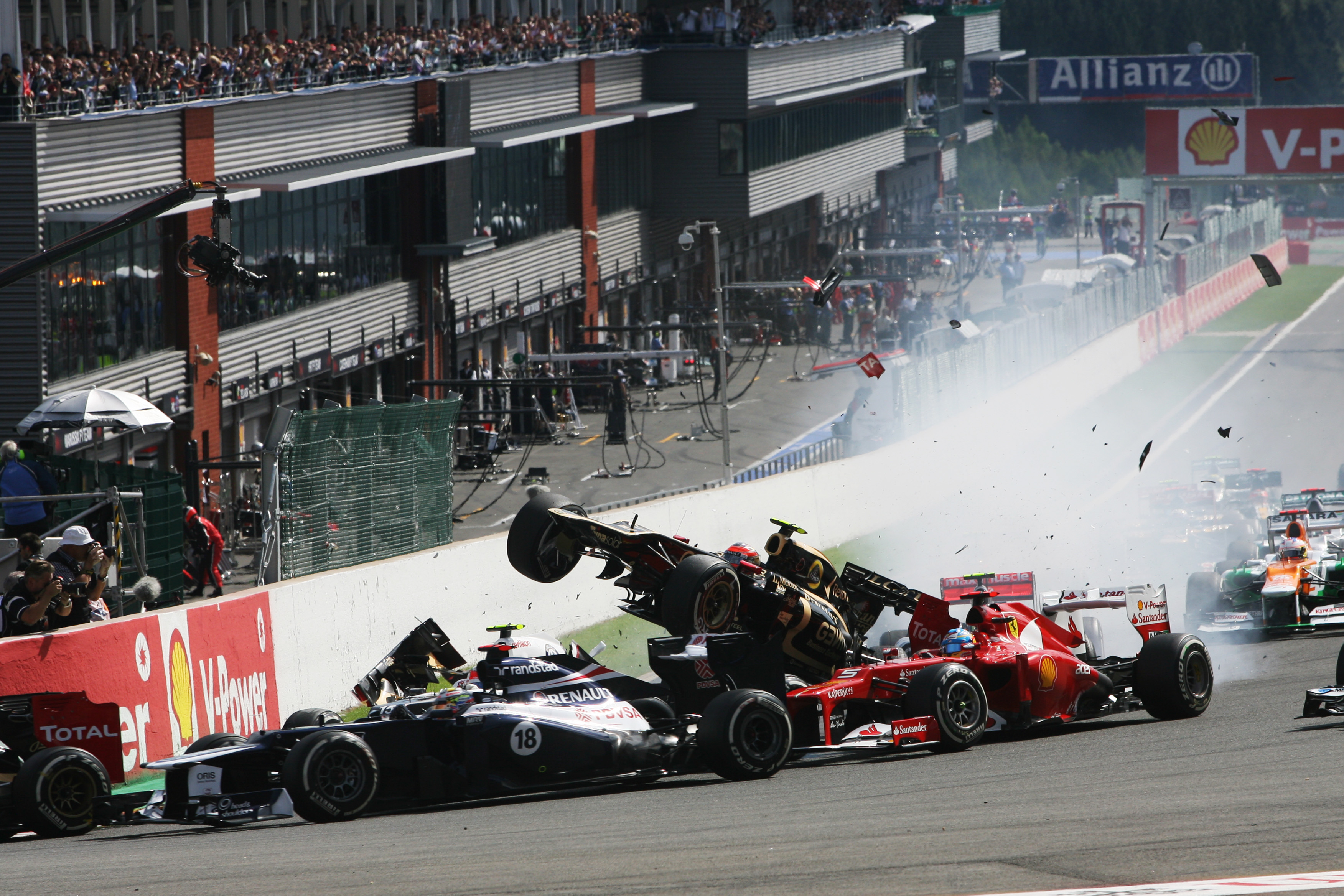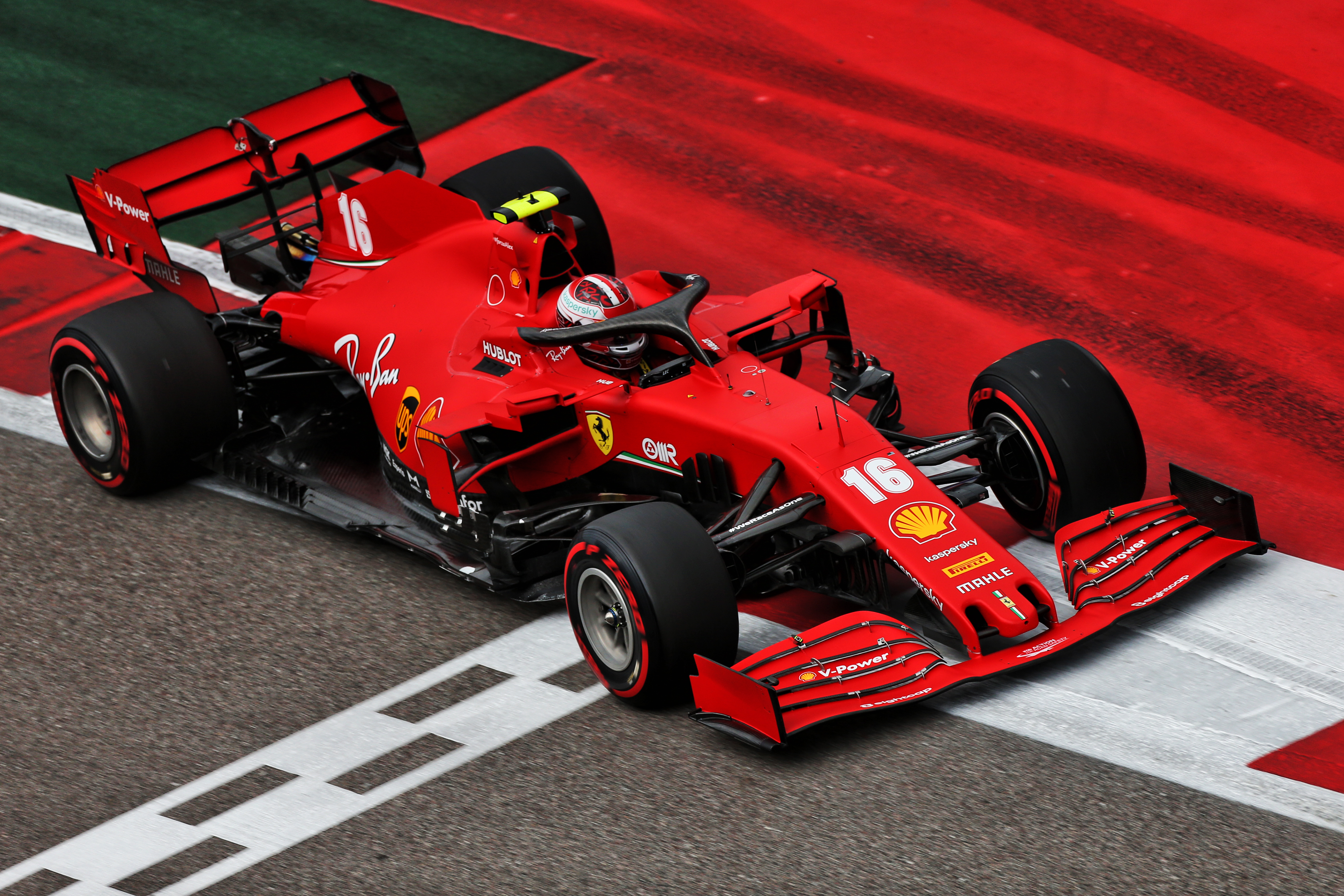Up Next

Formula 1’s superlicence penalty points system is necessary but doesn’t work as it should in practice.
While Lewis Hamilton had his “inappropriate” Sochi penalty points rescinded, there remains a need to review the way penalty points are used to ensure they are as effective as they should be.
The superlicence penalty points system was adopted in 2014 as a means to track and, if necessary, ban repeat offenders for an accumulation of offences over a 12-month period. The idea started to crystalise after Romain Grosjean’s ban for triggering the start crash at Spa in 2012.

As was confirmed at the time, beyond the specifics of the driving in that crash, the fact that it potentially impacted the world championship fight by eliminating the title-chasing Fernando Alonso and Grosjean’s own history were also factors. In the case of a driver’s record, the superlicence points are a way to track that in a more systematic way.
“If you are to miss a race for a few of these, let’s say minor, infringements it’s a little extreme” :: Daniel Ricciardo
The intent of the mechanism is not specifically to find ways to ban drivers. After all, such punishments are vanishingly rare in F1 with only six drivers being hit with formal race bans over the past 40 years – Nigel Mansell, Mika Hakkinen, Michael Schumacher, Eddie Irvine, Jacques Villeneuve (who raced under appeal to fifth in the 1997 Japanese Grand Prix before Williams withdrew and they lost the points) and Grosjean – and have rarely been necessary.
But this mechanism allows the FIA to keep repeat offenders under scrutiny and, hopefully, ensure those who get close to a ban moderate their behaviour.
It’s the same on the road in the United Kingdom as if you get to 12 points, you get a ban, and with three points for a standard offence you certainly don’t even get close to speeding if you are on nine! F1 is similar, with a serious driving offence earning you three points. That, for example, is what Nico Hulkenberg received for triggering the 2018 Spa crash pictured at the top of this article.
Since the system was introduced, nobody has triggered the ban although a few have got close – notably Sebastian Vettel and that man Grosjean. That suggests the bar for number of points is set at around the right level, but the concern is the broad range of reasons for gaining points.
Daniel Ricciardo made exactly that point when asked about Hamilton’s situation after the Sochi race. While this was before Hamilton’s penalty points had been withdrawn, Ricciardo expressed concern about the type of offence that had drawn points.
His position reflects exactly what the superlicence points system should be, even if his characterisation of football’s yellow and red card system is not entirely accurate.
Superlicence points are not appropriate for many offences unless the incident happens in a specifically dangerous or overtly incompetent way
“From what I understand, obviously he broke a rule but I don’t think he’s put anyone in danger,” said Ricciardo.
“I guess it’s like football – you get a yellow card for a dangerous tackle and you get a red card for a, let’s say, very dangerous tackle – correct me if I’m wrong on the rules.
“I think penalty points, if you are to miss a race for a few of these, let’s say minor, infringements it’s a little extreme.
“I haven’t heard what was said [by Hamilton] in the press conference but I understand the tone of voice and I would defend that. I don’t think it requires a further penalty and potentially him missing a race.
“Would it spice up the championship? Sure. But honestly speaking I would side with [Hamilton] on that one.”
Ricciardo’s point about spicing up the show was tongue in cheek and an entertainment factor should never come into such systems.
But it is right and proper that superlicence points are for offences that are meaningful and dangerous or that directly disadvantage rivals. Causing collisions, not respecting yellow flags, forcing rivals off track and any other offences that endanger either rivals or track workers should all carry such points.

But the system has evolved so that most offences carry a superlicence penalty point of some sort. These include gaining an advantage by cutting the track, lining up incorrectly on the grid, jump starts and ignoring blue flags. Except in cases where committing any of these offences is done in a specifically dangerous or overtly incompetent way, superlicence points are not appropriate.
What’s more, superlicence penalty points should be applicable in cases even when there is no other punishment. For example, why not one or two penalty points as a standalone punishment for Charles Leclerc clipping Lance Stroll at Turn 4 and sending the Racing Point into the wall on the opening lap at Sochi?
It was an honest and understandable error in the cut and thrust of the opening lap and is just one of those things in isolation.
But if this happens half-a-dozen times over 12 months perhaps there is a pattern of misjudgements that demands the driver be held to account? Superlicence penalty points can reflect that without ruining a driver’s race for a very small and honest mistake.
Ideally, such penalty points would become discretionary. This is where the problems arise as the FIA’s automatic penalty point system is a logical reaction to fears that any such discretionary system would be prone to abuses, biases and inconsistencies. But by locking it in, the risk is created whereby a one-race ban could be triggered by a trivial and innocuous offence.
This risk could be tackled were F1 to have a permanent stewards panel, or at the very least a much tighter permanent pool. While the FIA does track the history of such penalties and punishments for quick reference of precedents, that’s not as robust as having the same people stewarding week in, week out who will build a vast first-hand knowledge of all the previous decisions they had direct involvement in.
This would have a cost attached, but would help to ensure that a more effective, discretionary system is less risky. Provided the stewards elected for such a permanent panel were robust in their thinking and fully committed to what might be termed ‘racing justice’ they also wouldn’t shrink from triggering a ban with a legitimate penalty.
But whatever happens, it’s necessary to reconsider elements of the superlicence penalty point system to ensure it is entirely fit for purpose rather than attacking the concept as a whole.
The key is upholding safe and fair driving in grand prix racing and the offences that carry such penalty points should always reflect that.






